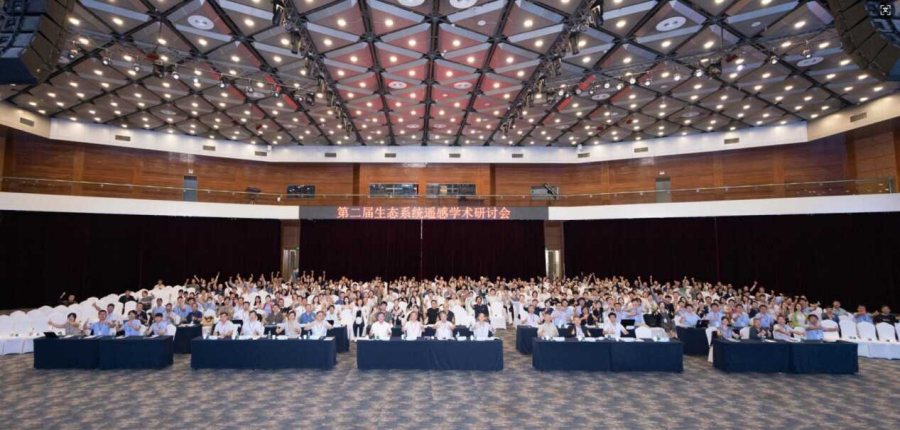2nd National Symposium on Ecosystem Remote Sensing Opens in Urumqi
2025-09-04
The 2nd National Symposium on Ecosystem Remote Sensing opened in Urumqi, Xinjiang on August 21. The symposium, themed "Ecosystem Remote Sensing and AI Support the New Mission of Ecological Science", was co-hosted by the Ecological Remote Sensing Professional Committee of the Ecological Society of China, the Aerospace Information Research Institute (AIR) of the Chinese Academy of Sciences (CAS), and the Xinjiang Institute of Ecology and Geography (XIEG), CAS. The event convened over 500 experts and scholars in ecology and remote sensing from nearly 100 research institutes, universities, and industry sectors across China.
YU Guirui (President of the Ecological Society of China, CAS Academician, and Professor at the Institute of Geographic Sciences and Natural Resources Research, CAS), XIAO Wenjiao (CAS Academician and Director-General of the CAS Xinjiang Branch), ZHANG Yuanming (Director of XIEG), and Wu Bingfang (Chair of the Ecological Remote Sensing Professional Committee of the Ecological Society of China and Researcher at the AIR) delivered opening remarks at the ceremony.
Three distinguished experts were invited to deliver keynote presentations, including YU Guirui, ZHANG Yuanming, and OUYANG Zhiyun (Porfessor at the Research Center for Eco-Environmental Sciences, CAS). Their presentations focused on terrestrial ecosystem carbon flux and carbon sink functions, the nationwide ecosystem survey and assessment, biodiversity in Central Asia, and the scientific expeditions in Xinjiang. They shared insights into the demand for ecosystem remote sensing in ecological research, its significance and scope, as well as frontier studies and future development.
YU Guirui noted that ecosystem remote sensing, as an interdisciplinary field, integrates theories and methodologies from remote sensing, ecology, environmental science, geography, and related disciplines. He emphasized that ecological research, whether conducted at micro or macro scales, increasingly relies on remote sensing technologies. He congratulated the Ecological Remote Sensing Professional Committee on its 10th anniversary, commending the development of a comprehensive "theory–method–practice" system in ecosystem remote sensing and noting its success in training several young researchers. He also expressed his hope that the Committee will continue to promote collaboration among scientists in ecology and remote sensing to advance and lead the development of ecosystem remote sensing.
WU Bingfang stated that with the rapid advancement of artificial intelligence (AI), its integration with ecosystem remote sensing has become an inevitable trend. AI has significantly enhanced the efficiency of ecosystem remote sensing, lowered costs, broadened application scenarios, and injected new momentum into the intelligent management of ecosystems. "This symposium aligns closely with this development trend by exploring and exchanging theories, methodologies, and application cases in ecosystem remote sensing, thereby promoting innovation and encouraging interdisciplinary development in the field," he said.
Biodiversity is fundamental to the stability and functioning of ecosystems, and arid regions are among the world’s biodiversity hotspots. ZHANG Yuanming pointed out that, due to global warming and shifting precipitation patterns, arid areas are continuing to expand, posing serious threats to biodiversity. In addition, he highlighted key achievements from the Third Xinjiang Scientific Expedition and encouraged domestic institutions and scholars to further advance in-depth research in Xinjiang and Central Asia.
The two-day symposium featured 12 keynote presentations and 20 parallel sessions, covering key topics including ecosystem patterns, parameters and functions, and ecosystem sustainability. The symposium enables participants to gain insights from leading scholars and engage in in-depth discussions with peers. The opening ceremony and keynote presentations were simultaneously livestreamed on Wechat and Bilibili channels, attracting more than 3,000 online viewers.

Participants at the Symposium
Contact
LONG Huaping
Xinjiang Institute of Ecology and Geography
E-mail: longhp@ms.xjb.ac.cn
Web: http://english.egi.cas.cn



